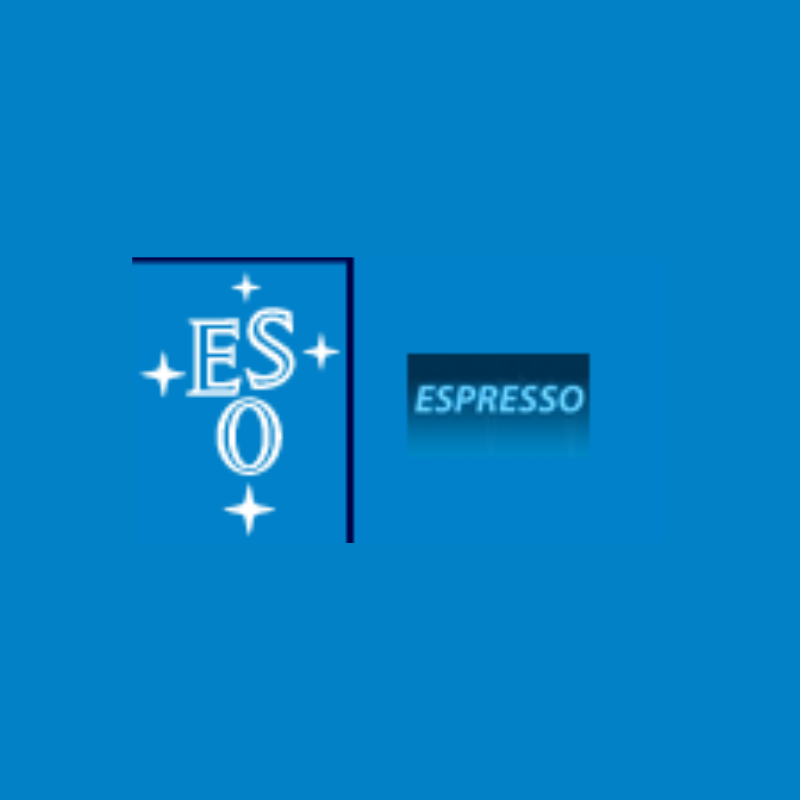
ESPRESSO
Echelle SPectrograph for Rocky Exoplanets and Stable Spectroscopic Observations
The Very Large Telescope’s Exoplanet Hunter
SHORT DESCRIPTION
In the field of research and study of extrasolar planets, our Observatory is involved in the ESPRESSO project.
ESPRESSO, designed by ESO and installed on the Very Large Telescope at the Paranal Observatory in northern Chile, saw its first light in December 2017. It is a third-generation echelle diffraction grating (dispersing element) spectrograph, successor to ESO’s HARPS instrument.
ESPRESSO is an ultra-stable spectrograph with high resolution and greater precision than previous instruments and unlike them, it can exploit the full collecting capacity of the VLT, i.e. it can be used with all four VLT Unit Telescopes (UTs) simultaneously to simulate a 16-meter diameter telescope.
ESPRESSO’s main goal is to detect Earth-mass planets in the habitable zone of stars similar to our Sun by measuring tiny changes in the star’s spectrum caused by the motion of the planet orbiting it. This method, called radial velocity, works because the planet’s gravitational pull influences the host star, causing it to wobble slightly.
ESPRESSO was designed and built by a consortium of the Astronomical Observatory of the University of Geneva and the University of Bern (Switzerland); INAF–Astronomical Observatory of Trieste and INAF–Astronomical Observatory of Brera, (Italy); Instituto de Astrofísica de Canarias (Spain); Institute of Astrophysics and Space Sciences, University of Porto and Lisbon (Portugal); and ESO. The principal investigators are Francesco Pepe (University of Geneva, Switzerland), Stefano Cristiani (INAF–Astronomical Observatory of Trieste, Italy), Rafael Rebolo (IAC, Tenerife, Spain) and Nuno Santos (Instituto de Astrofisica e Ciencias do Espaco, University of Porto, Portugal).
ROLE OF THE OBSERVATORY
The Brera Astronomical Observatory played a fundamental role in the creation of ESPRESSO, in particular with regard to the opto-mechanical apparatus that collects the light from the four VLT telescopes and channels it into the spectrograph (front-end interface system) and the guidance system.
OBSERVATORY STAFF INVOLVED
- Ennio Poretti – Co-investigator – ennio.poretti AT inaf.it
- Francesco Borsa – Science Team collaborator – francesco.borsa AT inaf.it
- Marco Riva – System Engineer – marco.riva AT inaf.it
- Giorgio Pariani – Optical Engineer – giorgio.pariani AT inaf.it
- Matteo Genoni – Fiber Engineer – matteo.genoni AT inaf.it
- Marco Landoni – Software Engineer – marco.landoni AT inaf.it
- Matteo Aliverti – Mechanical Engineer – matteo.aliverti AT inaf.it
- Luca Oggioni – Optical Engineer – luca.oggioni AT inaf.it
- Edoardo Maria Redaelli – Mechanical engineer – edoardo.redaelli AT inaf.it
TIMELINE
2017 –
WEBSITE
CONTACT
francesco.borsa AT inaf.it
CREDIT
Web page content: F. Borsa.
More information
The gravitational wobble produced by the planet around the star causes regular shifts in the star’s spectrum – and so by measuring any changes in velocity – one can see possible periodic effects due to the influence of an orbiting companion.
The less massive the planet, the smaller the wobble, so finding rocky planets that might even be able to host life requires a very high-precision instrument. With this method, ESPRESSO is able to reveal some of the lightest planets ever found. The radial velocity method allows us to measure the mass and orbit of the planet. Combined with other methods such as transits, it can provide additional information, such as the size and density of the exoplanet.
While ESPRESSO’s primary goal is to push planetary research to the next level—finding and characterizing less massive planets and their atmospheres—it has many other uses, too. It is the world’s most powerful tool for testing whether the constants of physics have changed since the Universe was young. Such tiny changes are predicted by some theories of fundamental physics, but have never been convincingly observed. It also probes the chemical composition of stars in nearby galaxies to understand how galaxies formed, providing an important first glimpse, although a definitive answer will require larger telescopes.
Once ESO’s Extremely Large Telescope (ELT – primary mirror diameter 39 meters) is up and running, the ANDES spectrograph (formerly HIRES), which is being designed by Italy and in which INAF is heavily involved, will be able to detect and characterise even smaller and lighter exoplanets, down to sizes comparable to those of the Earth, and study the atmospheres of exoplanets with the prospect of revealing clues to the presence of life on rocky planets.
